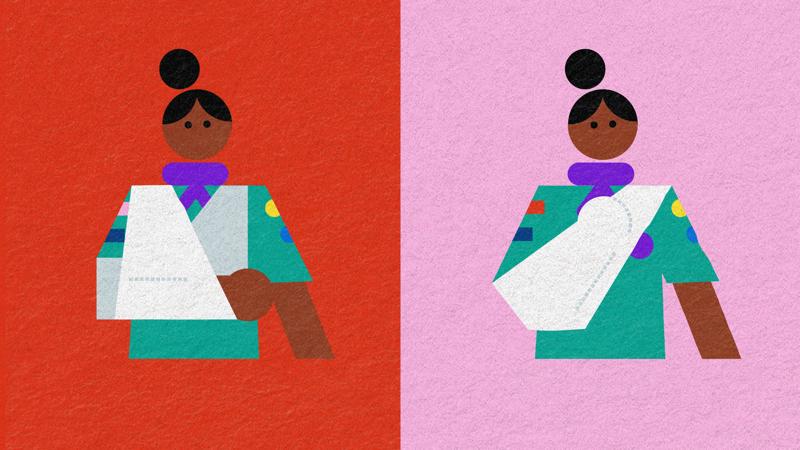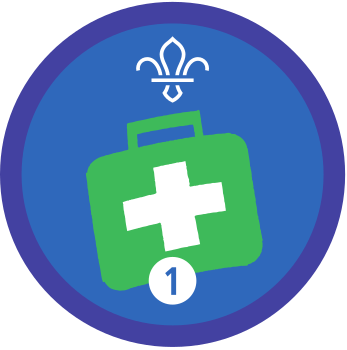
Practice calling 999 for first aid scenarios
You’ll need
- Scissors
St John's Ambulance Advice
Take a look at St John Ambulance’s guidance on how to treat a range of common conditions using first aud, from how to make an arm sling to how to manage a traffic accident.
Discover the guidanceBefore you begin
- Use the safety checklist to help you plan and risk assess your activity. Additional help to carry out your risk assessment, including examples can be found here. Don’t forget to make sure all young people and adults involved in the activity know how to take part safely.
- Make sure you’ll have enough adult helpers. You may need some parents and carers to help if you’re short on helpers
Planning this session
- Print the 'Emergency scenario cards' and cut them out.
Choose which help
- Split into two groups. One group are first aiders, the other group are injured people. If you don’t have an even number, you should have one pair of first aiders, who will work together to treat an injured person.
- Everyone should walk around the room. The person leading the game should make a signal, and the injured people should act like they’re injured or ill. People could hold the part of their body they’re pretending is hurt, point to the pain, or act out what’s happening.
- Each first aider should go to an injured person. They should find out what’s wrong.
- Each pair should talk about why it’s important to get help in an emergency. They should then think about calling out for help in case anyone is nearby, and decide what kind of medical help the injured person needs.
- Everyone should come back together, and some pairs should explain what was wrong and what help they though the person needed.
- Explain that it’s important to get help in an emergency – first by shouting out, in case anyone is nearby. If anyone is seriously ill or injured (or their life is at risk), you should call 999.
- Ask if anyone knows what a medical emergency might be.
- Tell people that medical emergencies can include: loss of consciousness, a confused state, fits that aren’t stopping, chest pain, breathing difficulties, severe bleeding that can’t be stopped, severe allergic reactions, and severe burns or scalds.
- Explain that if it’s not a life-threatening emergency, and the person you’re with doesn’t need immediate medical attention, there are other options instead of calling 999. You can call 111, or go to your local NHS walk-in centre, urgent care centre, or local minor injuries unit.
Practice 999
- Everyone should get back into their pairs. One person should be the 999 caller, and the other person should be the call handler (or 999 operator).
- The 999 caller should choose an imaginary emergency. They could pretend someone’s fallen and broken their arm, someone’s hit their head and isn’t moving, someone’s been hit by a car, or that they’ve cut themselves with a knife.
- The call handler should ask the caller their name, the address of the emergency, and the caller’s telephone number. They should ask what’s happened, and what condition the patient is in (for example, are they breathing?).
- The 999 caller should answer all of the call handler’s questions, and describe what they can see. They should include details of any hazards like gas, damage to power lines, or bad weather conditions.
Test yourself with scenarios
- Each pair should join with another pair, making a group of four.
- Give each group a scenario card and the relevant first aid facts.
- Each group should think about the scenario, and what they’d do.
- They create a short roleplay, to show the scenario, and what they’d do. They should make sure they include the key questions on their scenario card.
- Come back together and take it in turns to watch the groups’ roleplays.
Reflection
This activity helped you to develop important skills. Why is first aid (and knowing how to ask for help) so important? Would you know what to do in an emergency? What do you think would be different if it were a real emergency (for example, it might be harder to stay calm)? Would you like to learn more about first aid? Do you know how to keep yourself safe while caring for others?
This activity helped you to care. Do you think it’s important to know first aid? How does first aid help you to help other people? How do you think people might be feeling if they’ve been involved with (or have witnessed) an emergency? How can you help then?
Safety
All activities must be safely managed. You must complete a thorough risk assessment and take appropriate steps to reduce risk. Use the safety checklist to help you plan and risk assess your activity. Always get approval for the activity, and have suitable supervision and an InTouch process.
- Scissors
Supervise young people appropriately when they’re using scissors. Store all sharp objects securely, out of the reach of young people.
If anyone in your group has experienced an emergency, has a family member with a medical condition (such as asthma), lives with a medical condition, or is sensitive to anything such as blood you may need to adapt this activity. Speak to young people (and their parents and carers) first to check that they’re OK to take part. You may need to remove some scenarios or cards, or offer extra reassurance or information.
Anyone who struggles with reading can join a group with a more confident reader who’s happy to read the scenarios and facts out loud.
It’s OK if not everyone wants to act in the roleplay or be in front of the group. Some people could narrate, or help direct. If groups want to, they could always make a poster (or just tell everyone what they’d do) instead.
All Scout activities should be inclusive and accessible.
You could use real phones, walkie talkies, or cans on string to make the 999 phone calls feel more real.
